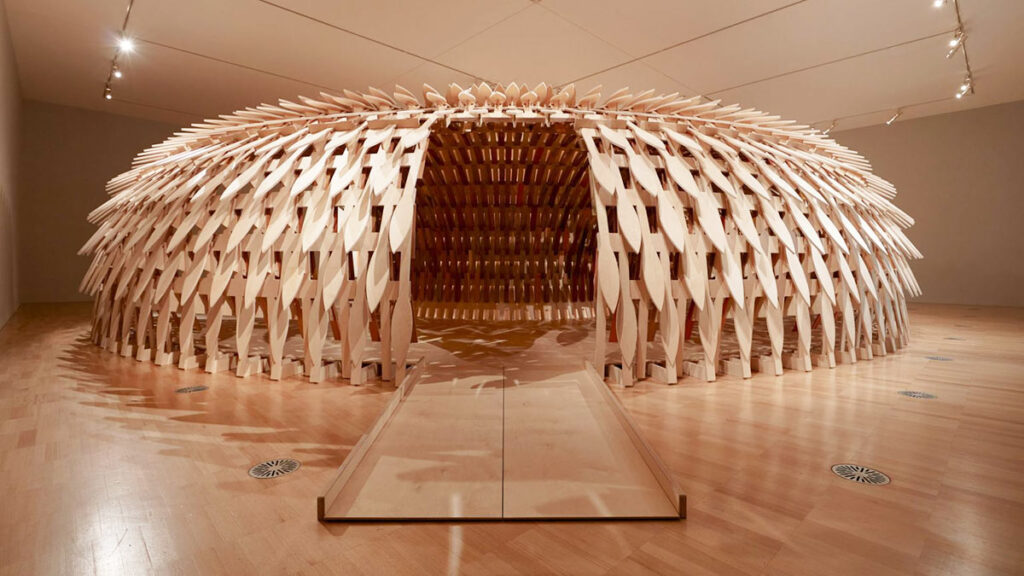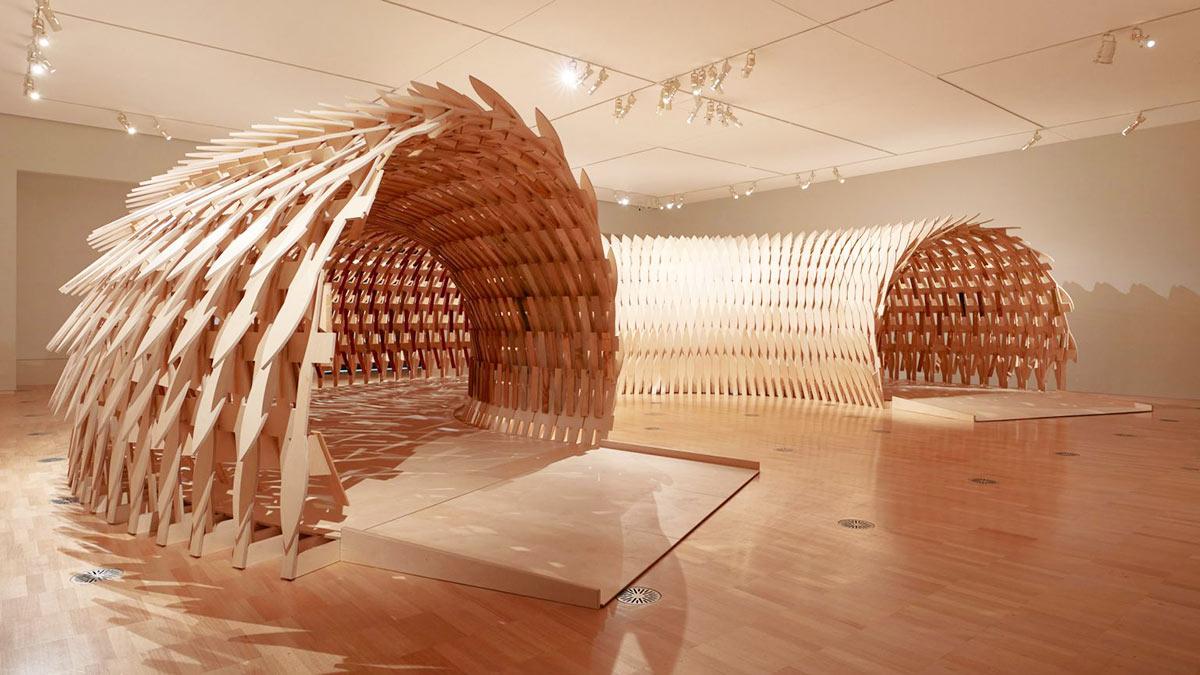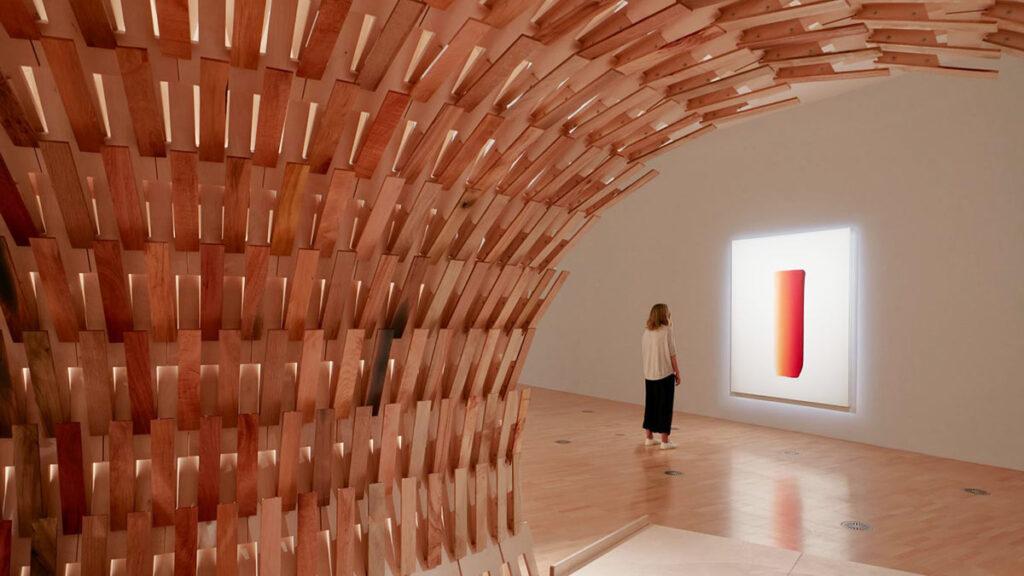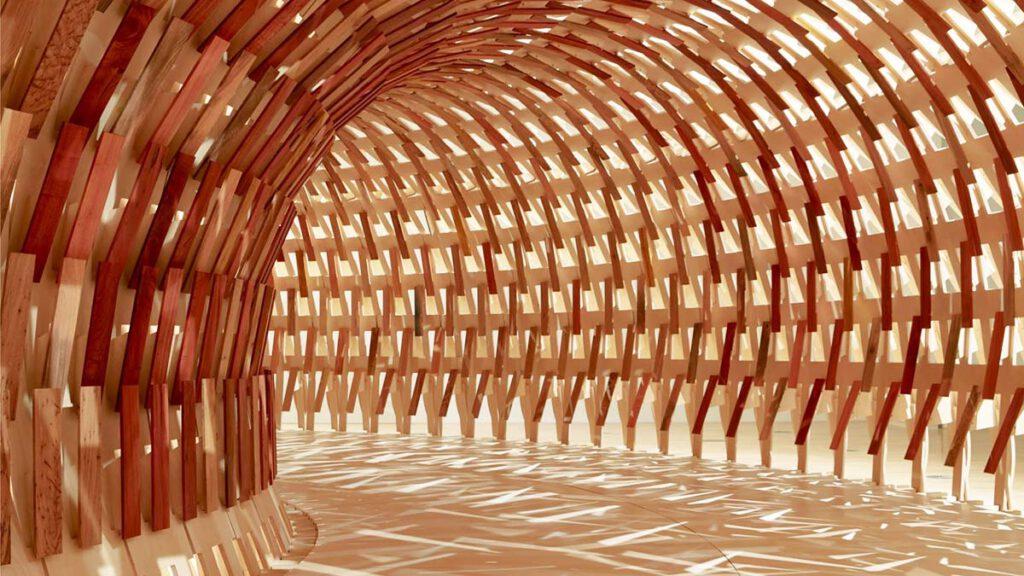The tessellated pavilion
Japanese architect Kengo Kuma and Australian artist Geoff Nees teamed up to design the Botanical Pavilion – a wooden pavilion that is constructed like a 3D puzzle – without using any kind of glue or screws.
DIY enthusiasts would be unlikely to opt for this kind of pergola. After all, it has no need for the tools used in homes and gardens with such satisfaction, such as cordless screwdrivers and Allen keys. There is no hammering, no drilling and no clamping. If the Botanical Pavilion were on sale at your local garden centre, it would come in a set with identical pieces of wood and an illustrated construction booklet. Instead of being skilled at DIY, for this project you would just need to love doing jigsaw puzzles.
A spatial experience for art
This cylindrical timber pavilion was designed by one of Japan’s most eminent contemporary architects, Kengo Kuma, together with Australian artist Geoff Nees for the 2020 NGV Triennial, the art and architecture festival at the National Gallery of Victoria in Melbourne. The installation aimed to create a connection with the painting by Korean artist Lee Ufan. In the exhibition, the round opening on both sides of the pavilion created a frame and a sensorial spatial experience for the artwork.
I often receive inspiration from Japanese craftsmanship with its respect for material, where materials and details go together.
Kengo Kuma, architect
“The semi-circular shape of the pavilion invites the visitor into a journey to explore the space and experience the various essences of wood,” explains Kengo Kuma. The Botanical Pavilion took its name from the Royal Botanical Gardens in Melbourne, where Kuma and Nees collected the timber from fallen branches and trees over many years. This “beautiful but unused wood” was given new life in the pavilion.
Connected to nature
Kuma’s approach to design is rooted in the traditions of Japanese carpentry, where individual pieces are interlocked and held together by tension and gravity alone. “I often receive inspiration from Japanese craftsmanship with its respect for material, where materials and details go together,” says Kuma. The pavilion’s tessellated structural shell displays colour coding on the inside, which results simply from the different types of wood. “This gives the visitor a different perception of light and colour at every section of the pavilion.”
I think my architecture is some kind of frame for nature.
Kengo Kuma, architect
In his reinterpretations of Japanese traditions, Kuma believes that this manner of construction – by joining smaller pieces to form a large whole – often automatically produces an organic form. “Since the pavilions I make are made of natural materials such as wood, I think organic and curved shapes help to better connect and blend the architecture in the natural world.”
Subtle concept design
Kengo Kuma is regarded as an icon in the world of architecture. In his sensitive conceptions, he creates a careful balance between tradition and present-day. For instance, for the Museum von Hans Christian Andersen in Denmark’s Odense Kuma has staged an artistic experience that adds an architectural dimension to the literary world of this famous storyteller.
This subtlety runs like a golden thread through Kuma’s work. In his architectural office Kengo Kuma Associates he has created numerous international projects. These frequently display references to historical Japanese architecture and place traditional elements in a 21th-century context. Describing the architect, the National Gallery of Victoria writes: “His design approach elevates the role and meaning of natural light and materials in contemporary architecture.”
Kuma himself describes his approach to architecture as follows: “I think my architecture is some kind of frame for nature. With it we can experience nature more deeply and more intimately.”
Text: Gertraud Gerst
Translation: Rosemary Bridger-Lippe
Photos: Tom Ross, Kengo Kuma, Geoff Nees



